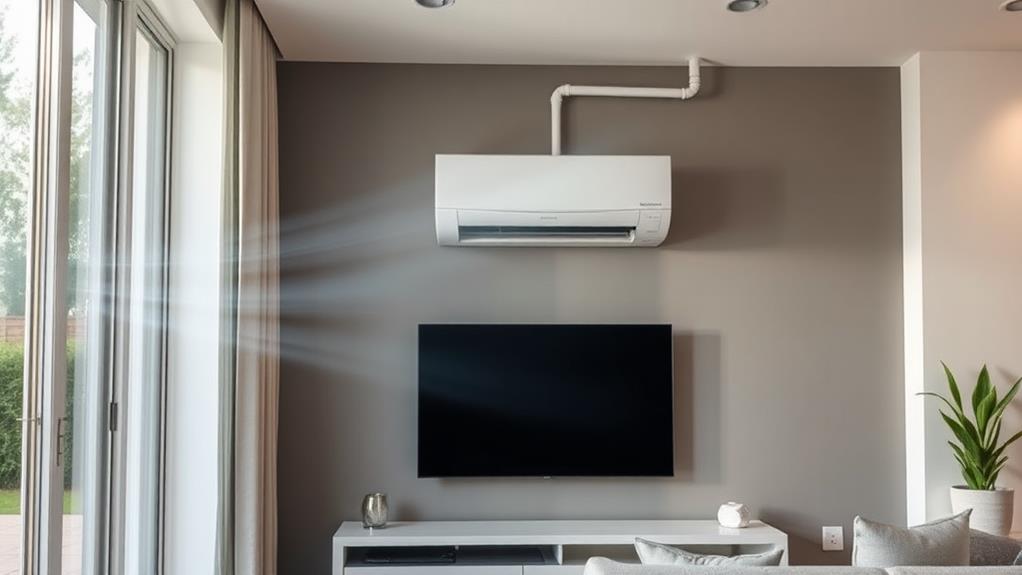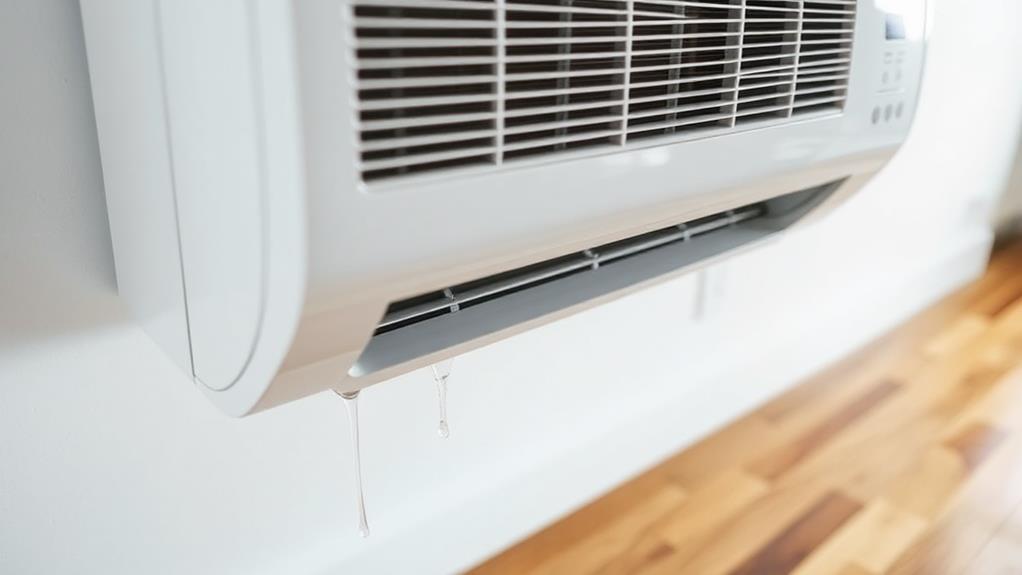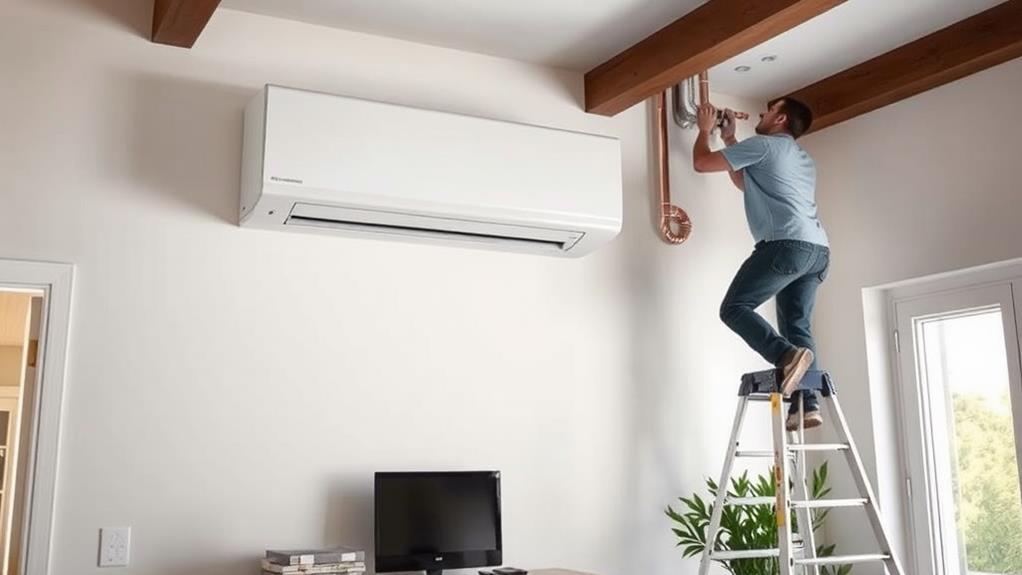Ductless mini-split systems offer exceptional energy efficiency and precise temperature control for individual rooms. You'll enjoy quiet operation, improved air quality, and lower utility bills. They're ideal for homes without existing ductwork, sunrooms, and multi-zone applications. However, these systems come with higher upfront costs and potential aesthetic issues due to visible indoor units. Installation requires professional expertise, and regular maintenance is necessary. Mini-splits work best in homes without ductwork, small apartments, and eco-friendly designs. While they're highly efficient, they may struggle in extremely cold climates. Understanding the full scope of pros, cons, and applications will help you make an informed decision.
How Ductless Mini-Splits Work

Ductless mini-split systems revolutionize home cooling and heating by eliminating the need for complex ductwork. These systems consist of two main components: an outdoor compressor unit and one or more indoor air-handling units. They're connected by a small conduit that houses refrigerant lines, power cables, and a condensate drain.
The outdoor unit contains the compressor and condenser, which compress and cool the refrigerant. This refrigerant then travels through the conduit to the indoor unit(s). Each indoor unit, typically mounted on a wall or ceiling, houses an evaporator coil and a fan. As warm indoor air passes over the evaporator coil, the refrigerant absorbs heat, cooling the air. The fan then distributes this cooled air throughout the room.
For heating, the process reverses. The outdoor unit absorbs heat from the outside air and transfers it indoors via the refrigerant. The indoor unit's fan then circulates this warmed air. You can control each indoor unit independently, allowing for customized temperature settings in different rooms or zones. This zoned approach enhances energy efficiency and comfort, as you're only heating or cooling occupied spaces.
Advantages of Mini-Split Systems
Offering numerous benefits, mini-split systems have gained popularity among homeowners and builders alike. These systems provide exceptional energy efficiency, allowing you to save on utility bills while reducing your carbon footprint. You'll enjoy precise temperature control in individual rooms, creating personalized comfort zones throughout your home.
Mini-splits are incredibly versatile, making them ideal for various applications. They're perfect for home additions, sunrooms, or spaces that lack existing ductwork. You won't need to worry about costly and disruptive duct installation, as these systems require only a small hole in the wall for installation.
Another advantage is their quiet operation. Unlike traditional HVAC systems, mini-splits run silently, ensuring a peaceful living environment. They also improve indoor air quality by filtering out allergens and pollutants, creating a healthier home atmosphere.
Mini-splits offer space-saving benefits, with compact indoor units that can be mounted on walls or ceilings. This design flexibility allows you to maximize your living space while maintaining a sleek, modern aesthetic. Additionally, these systems are easy to maintain, requiring only periodic filter cleaning and occasional professional check-ups to keep them running efficiently.
Drawbacks to Consider

Despite their many advantages, mini-split systems aren't without drawbacks. You'll need to consider the higher upfront costs compared to traditional HVAC systems. The initial investment can be substantial, especially if you're outfitting multiple rooms.
Aesthetics can be an issue, as the indoor units are visible on walls or ceilings. Some homeowners find these units unsightly or struggle to integrate them into their décor. Additionally, while installation is generally easier than ducted systems, it still requires professional expertise and may involve drilling holes in walls for refrigerant lines.
Maintenance is another factor to consider. You'll need to clean or replace filters regularly and ensure outdoor units remain free from debris. In colder climates, mini-splits may struggle to heat effectively, potentially requiring a backup heat source.
Lastly, sizing and placement are crucial. An improperly sized or positioned unit can lead to inefficient operation and reduced comfort. You might also experience uneven temperature distribution in larger spaces, as each unit only conditions a specific zone.
Best Applications for Mini-Splits
Where do mini-split systems truly shine? They're ideal for homes without existing ductwork, making them perfect for older buildings, additions, or renovated spaces. You'll find mini-splits particularly useful in sunrooms, garages, attics, and basements where extending ductwork would be costly or impractical.
These systems excel in multi-zone applications, allowing you to create customized comfort zones throughout your home. They're great for rooms that are consistently too hot or cold, as well as spaces that need precise temperature control, like home offices or bedrooms.
Mini-splits are also an excellent choice for small apartments or condos where space is at a premium. Their compact design and lack of ductwork make them unobtrusive and efficient for tight living quarters.
If you're environmentally conscious, you'll appreciate mini-splits in net-zero or passive house designs. Their high efficiency and ability to integrate with solar panels make them a go-to option for eco-friendly homes.
Lastly, mini-splits are perfect for supplemental heating and cooling in specific areas, such as a home addition or a rarely used guest room, without affecting your main HVAC system.
Installation and Maintenance

When it comes to installation and maintenance, mini-split systems offer a relatively straightforward process. You'll need a professional HVAC technician to install your system, as it requires specialized tools and knowledge. The installation typically involves mounting the indoor air handler on a wall or ceiling, drilling a small hole for the conduit, and connecting it to the outdoor compressor unit.
The installation typically involves mounting the indoor air handler on a wall or ceiling, drilling a small hole for the conduit, and connecting it to the outdoor compressor unit.
You can expect the installation to take about a day, depending on the number of indoor units. Once installed, maintaining your mini-split system is fairly simple. Regularly clean or replace the air filters every 1-2 months, and keep the outdoor unit free from debris. You should also clean the evaporator coils annually to ensure optimal performance.
It's recommended to have a professional technician perform a thorough maintenance check once a year. They'll inspect refrigerant levels, electrical connections, and overall system performance. With proper care, your mini-split system can last 15-20 years. Remember, consistent maintenance not only extends the lifespan of your system but also helps maintain its energy efficiency, saving you money on utility bills in the long run.
Cost Considerations
Although ductless mini-split systems offer numerous benefits, it's crucial to consider the costs involved. You'll find that the initial investment for a ductless system is typically higher than traditional HVAC options. Expect to pay between $1,500 to $8,000 per unit, depending on the system's size and efficiency rating. Installation costs can add another $1,000 to $3,000 to your total expense.
However, you'll likely see long-term savings on your energy bills. Ductless systems are highly efficient, potentially reducing your heating and cooling costs by 30% to 40%. They also eliminate the energy loss associated with ductwork, which can account for up to 30% of energy consumption in central systems.
When budgeting, don't forget to factor in maintenance costs. While ductless systems generally require less maintenance than traditional HVAC systems, you'll still need to clean or replace filters regularly and schedule professional check-ups. These costs are typically lower than those for central systems, but they're not negligible.
Lastly, consider potential rebates and tax incentives. Many utility companies and government programs offer financial incentives for installing energy-efficient HVAC systems, which can help offset your initial investment.
Conclusion
You've now explored the world of ductless mini-splits, a technology so efficient it might make your old AC system weep with envy. Whether you're looking to cool a single room or heat your entire home, mini-splits offer flexibility and energy savings. They're not perfect for every situation, but in the right applications, they're hard to beat. Consider your space, budget, and needs carefully before deciding if a mini-split system is right for you.

